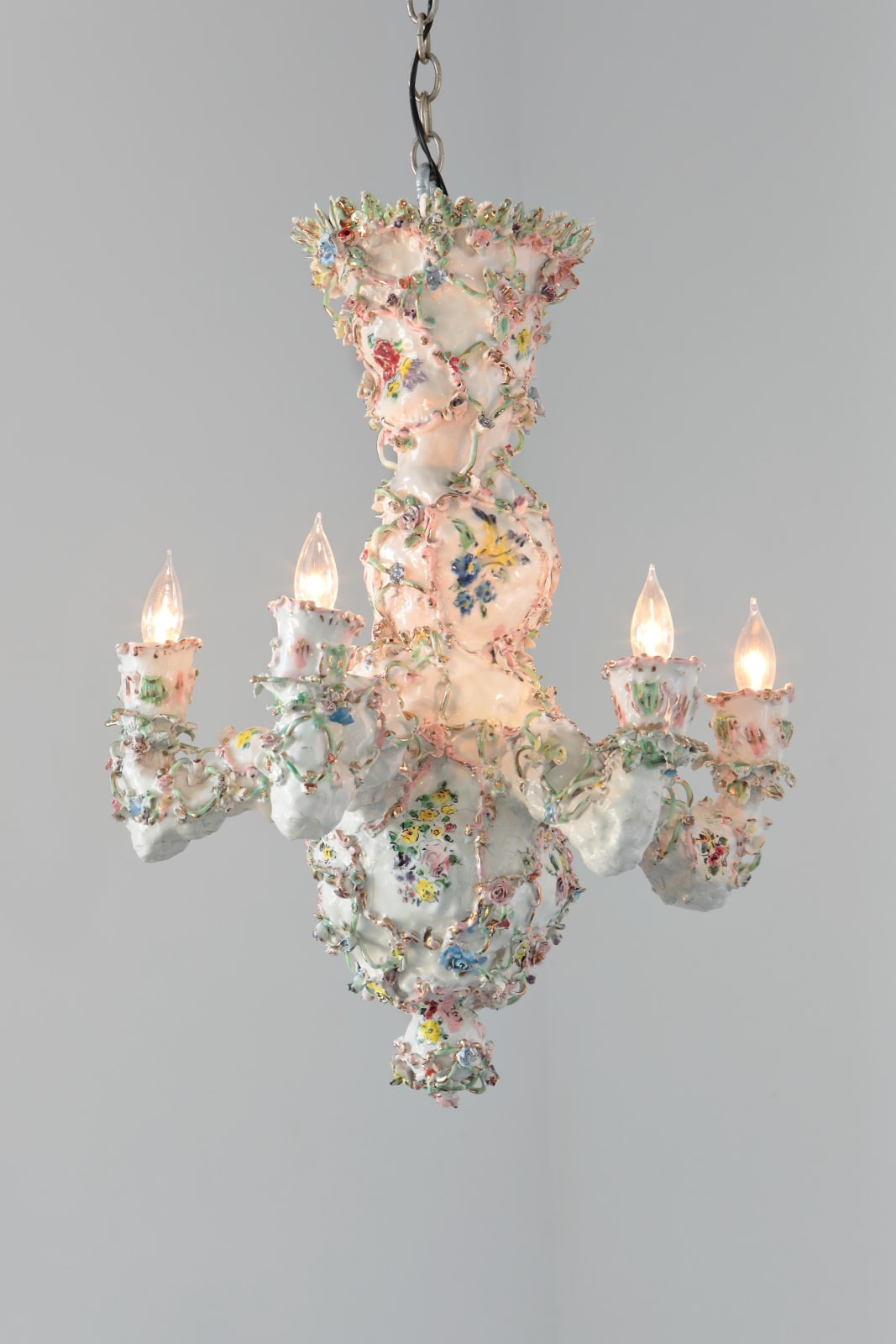

Francesca DiMattio
Rococo chandelier, 2025
Glaze and gold luster on porcelain
27 x 21 x 21 in
68.6 x 53.3 x 53.3 cm
68.6 x 53.3 x 53.3 cm
Copyright The Artist
In Rococo Chandelier, Francesca DiMattio reinterprets the traditions of the decorative arts through a contemporary, feminist lens. At a domestic scale, the chandelier alludes to the ornate flourishes of 18th-century...
In Rococo Chandelier, Francesca DiMattio reinterprets the traditions of the decorative arts through a contemporary, feminist lens. At a domestic scale, the chandelier alludes to the ornate flourishes of 18th-century European porcelain—floral garlands, curling arms, and delicate filigree—but reconfigures these markers of refinement with a subversive twist. Glazed surfaces swell and fragment, floral motifs spread like a contagion, and historical references collapse into each other, creating a work that is as much about instability as it is about beauty.
DiMattio’s practice is grounded in contradiction: high and low, past and present, control and chaos. While the chandelier format evokes elegance and aspiration, its construction resists preciousness. Like much of her work, Rococo Chandelier engages with materials traditionally coded as feminine—ceramics, porcelain, ornamentation—but pushes them toward excess, interruption, and transformation. The result is not simply a decorative object, but a layered sculpture that reframes ideas of taste, femininity, and domesticity.
By translating grand historical forms into an intimate scale, DiMattio invites viewers to look closely at how value and identity are constructed—and destabilized—through everyday objects. Rococo Chandelier doesn’t just illuminate; it complicates.
DiMattio’s practice is grounded in contradiction: high and low, past and present, control and chaos. While the chandelier format evokes elegance and aspiration, its construction resists preciousness. Like much of her work, Rococo Chandelier engages with materials traditionally coded as feminine—ceramics, porcelain, ornamentation—but pushes them toward excess, interruption, and transformation. The result is not simply a decorative object, but a layered sculpture that reframes ideas of taste, femininity, and domesticity.
By translating grand historical forms into an intimate scale, DiMattio invites viewers to look closely at how value and identity are constructed—and destabilized—through everyday objects. Rococo Chandelier doesn’t just illuminate; it complicates.
Provenance
from artist's studioExhibitions
Matter and FormJoin our mailing list
* denotes required fields
We will process the personal data you have supplied in accordance with our privacy policy (available on request). You can unsubscribe or change your preferences at any time by clicking the link in our emails.


